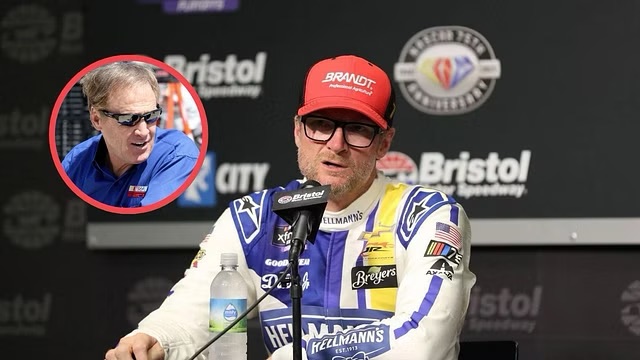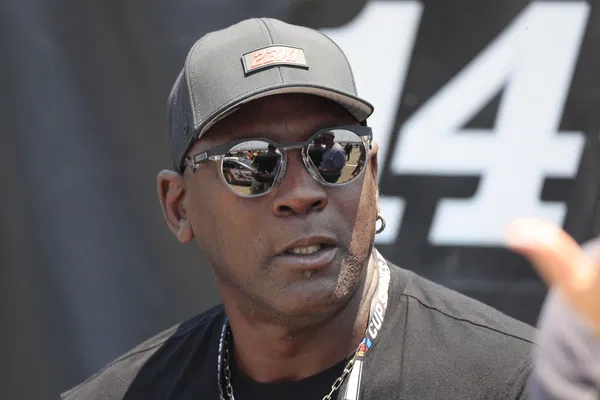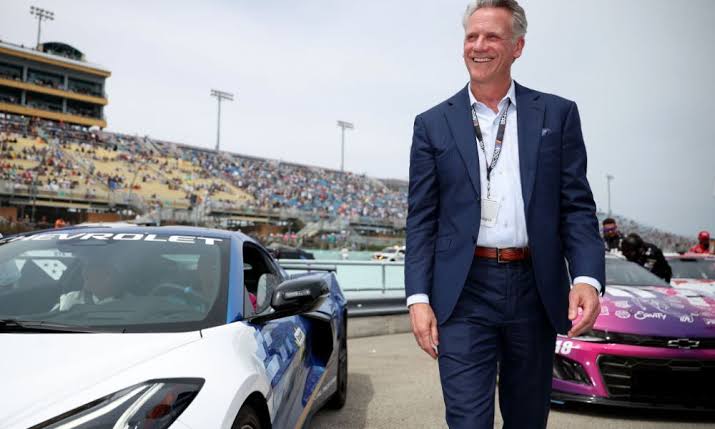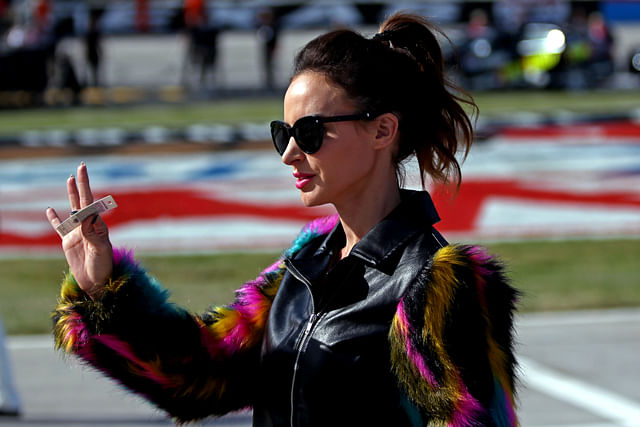Dale Jr. Reflects on Etiquette in NASCAR and the Impact of Rusty Wallace’s Influence
During his career in NASCAR, Dale Earnhardt Jr. has faced various incidents on the track that highlighted the nuances of driver interactions, rivalries, and respect. One notable incident occurred with Shawna Robinson, a fellow competitor, who, though never admitting to intentional wrongdoing, found herself in a controversial situation with Dale Jr. after a practice incident. Robinson, clearly frustrated by the earlier interaction, ended up wrecking Dale Jr. later in the race. Although she never confirmed that her actions were deliberate, her visible frustration from the prior incident suggests that emotions ran high. According to Earnhardt Jr., she was “very upset” over what had transpired during practice, which ultimately played a role in what happened during the race.
This incident, though, sheds light on a broader topic within NASCAR — the concept of driver etiquette, particularly when it comes to showing disrespect or frustration with hand gestures on the track. Flipping off another driver, an act of anger often seen in general traffic, carries a much heavier weight in the world of professional racing. The consequences of such actions can linger far beyond the heat of the moment.
Earnhardt Jr., in an interview with NASCAR journalist Jeff Gluck, explained how hand gestures, especially the middle finger, are viewed within the sport. He revealed that while it’s something rarely discussed, flipping off another driver, whether a peer or a more senior competitor, is considered highly disrespectful in NASCAR circles. According to Dale Jr., this type of action is not something taken lightly, particularly when directed at a veteran or someone with more experience. The unwritten rules in NASCAR dictate that disrespecting a senior driver is an invitation for retaliation, often resulting in immediate consequences on the track.
Earnhardt Jr. specifically mentioned NASCAR legend and Hall of Famer Rusty Wallace when discussing this code of conduct. He emphasized that drivers like Wallace were not ones to take such disrespect lying down. According to Dale Jr., if a younger driver dared to flip off someone like Wallace, it would likely trigger an intense response. “You hear about Rusty Wallace and all those other guys—if you get flipped off, especially by someone younger than you? You just go on attack mode. You lose your mind,” Dale Jr. explained. This insight paints a picture of just how important respect and hierarchy are within the racing community, with veterans demanding their due respect from younger drivers.
The younger Earnhardt further expanded on the rarely-discussed phenomenon of giving the middle finger on the track, calling it a “very seldom used” gesture in the NASCAR world. According to him, while it might be common in other walks of life or on public roads, in professional racing, the stakes are much higher. The aggression that comes with flipping off another driver could lead to more than just hurt feelings — it could mean a wrecked car or even jeopardized standing in the race or season.
Earnhardt Jr. added that while the gesture itself is rare, when it does happen, there is an “etiquette” that surrounds it. It’s not something drivers do lightly, and if they do, they must be prepared for the consequences, which could involve on-track retaliation or tension that could last well beyond the race.
NASCAR drivers, though competitive and often fiercely determined to win, share a mutual respect that is fundamental to their interactions on and off the track. This unspoken etiquette plays a role in maintaining the balance between competition and camaraderie. In a sport where split-second decisions can make or break a race, emotions run high, but so does the need to maintain professionalism and respect among peers. Hand gestures, especially the middle finger, break this code and risk turning what could be a competitive rivalry into a personal grudge.
Dale Jr.’s reflections on Rusty Wallace’s influence underscore the lasting impact that veterans have on the culture of NASCAR. Legends like Wallace helped shape the behaviors and expectations of younger drivers, setting standards that persist even today. While on-track disputes and heated moments are inevitable, respecting those who came before you remains a cornerstone of NASCAR’s competitive spirit.
In conclusion, Dale Earnhardt Jr.’s experience with Shawna Robinson serves as a reminder that even minor gestures can have significant repercussions in the world of professional racing. The respect drivers hold for one another — especially for their senior counterparts — is essential in maintaining the delicate balance between rivalry and sportsmanship. Whether intentional or not, breaking these unwritten rules can lead to lasting consequences, both on and off the track. The lessons learned from legends like Rusty Wallace continue to influence NASCAR drivers today, reminding them of the importance of respect, both as competitors and as individuals within a tight-knit racing community.




